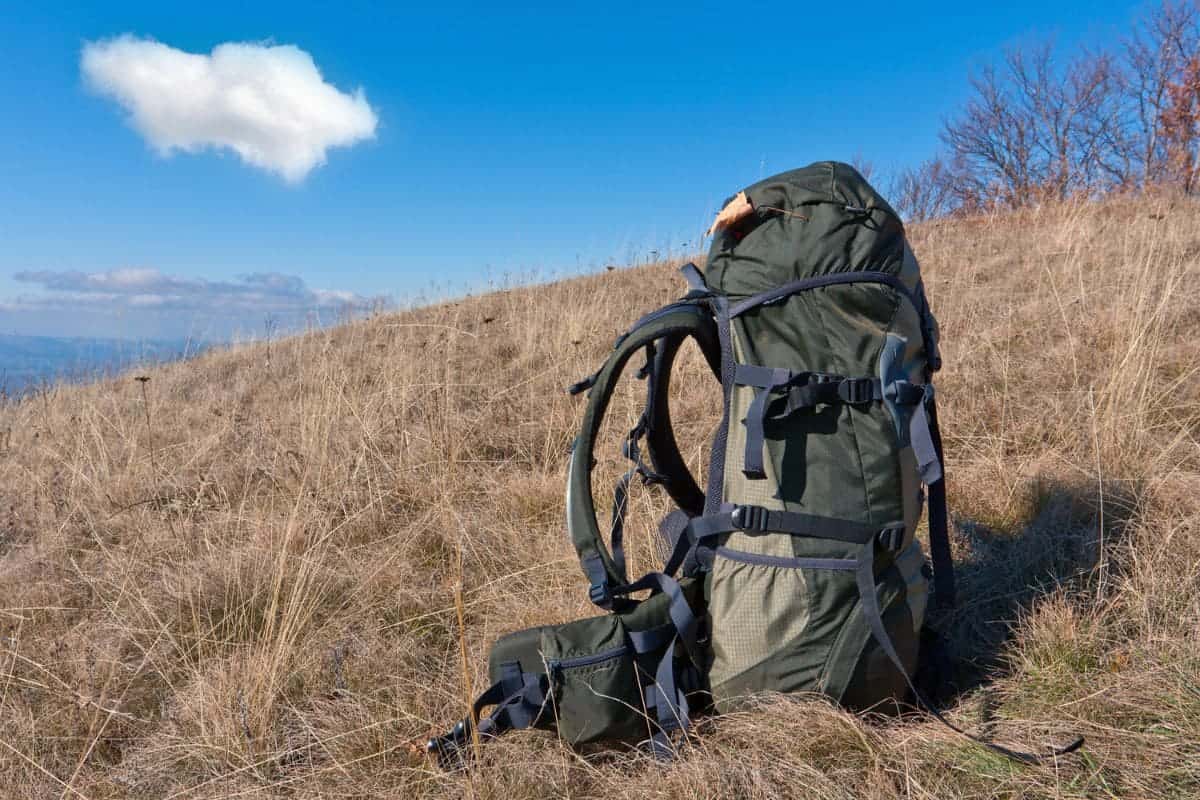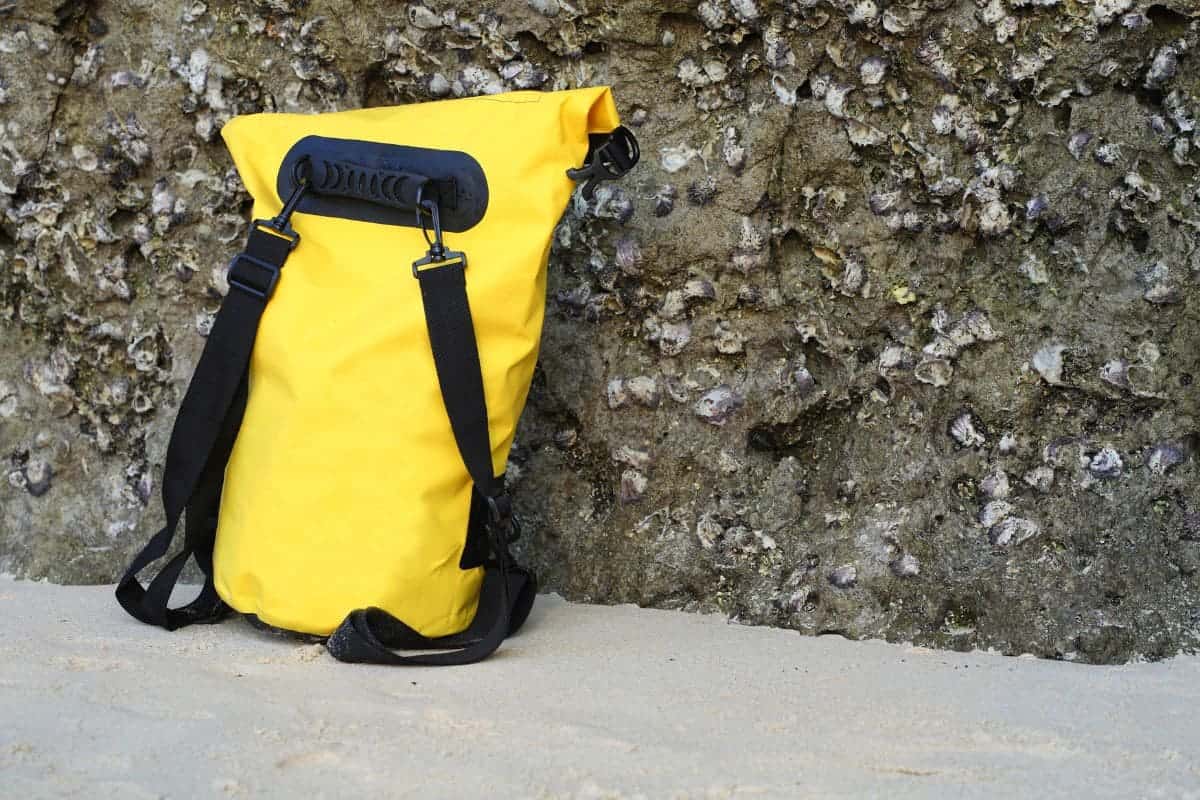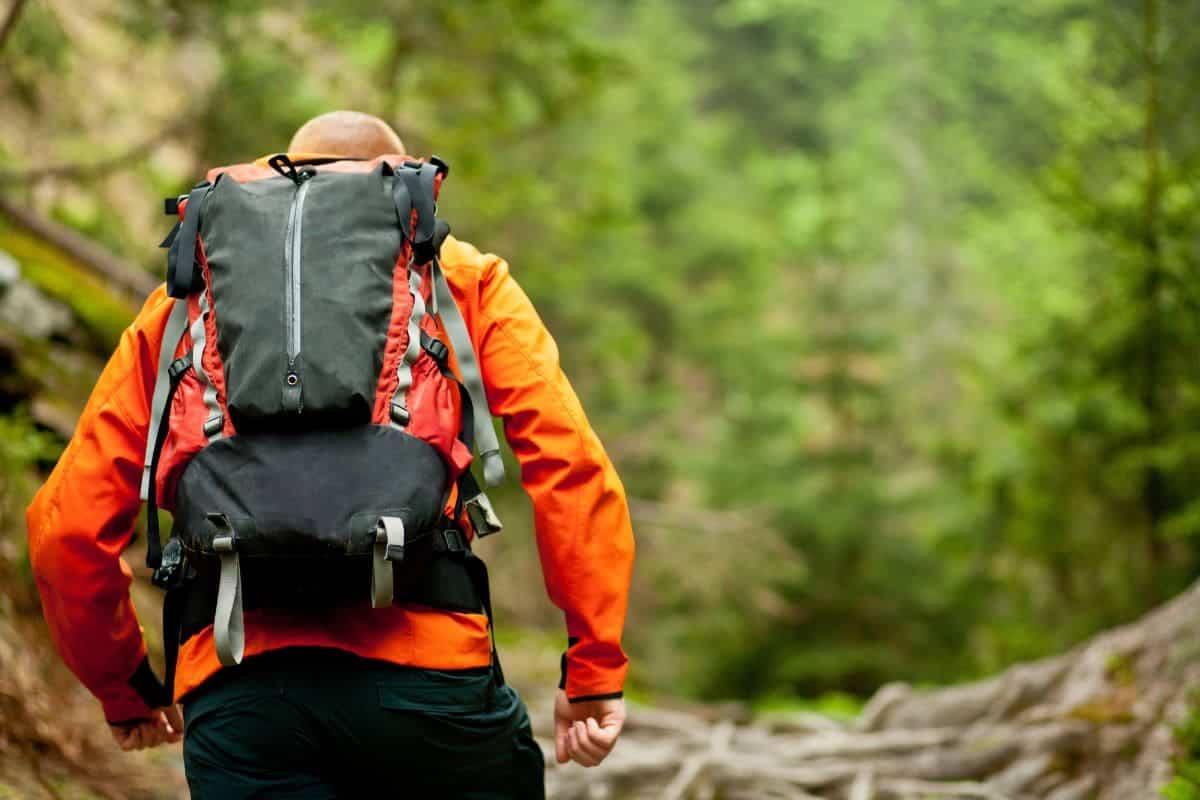When it comes to backpacking, should you choose pack liners or dry bags?
Pack liners, being lightweight and conforming to your backpack’s shape, provide an easily accessible way to shield your belongings. In contrast, dry bags are made from tougher materials like PVC or nylon, offering more durability and external gear protection.
You don’t want to stop on the trail and find that all your gear is wet or dirty. This guide will walk you through what’s needed to save yourself the trouble that immature hikers find themselves in.
I’ve tried everything. I’ve even tried every size dry bag and have an illustrated guide on how much you can fit in each size. But before you decide, let’s look at both angles.
Key Takeaways
- Pack liners and dry bags serve the same purpose of keeping gear dry, but vary significantly in material and design.
- Choosing between pack liners and dry bags often depends on personal preference, with considerations for weight, durability, and pack volume.
- Both options can be used in tandem to provide specialized protection for backpacking gear in a range of circumstances.
For the most up-to-date information about dry bags, please take a look at my ultimate guide to dry bags here.
Understanding Pack Liners and Dry Bags

Backpackers often choose between pack liners and dry bags to keep their gear dry. They differ in materials, durability, and approach to sealing out water.
Material and Durability
- Pack Liners: Manufacturers typically use lightweight, thin plastics, like polyethylene, to make these items, designing them to line the inside of a backpack. While they are not as durable as dry bags and can be prone to tearing, they are usually quite affordable.
- Dry Bags: They are made from heavier-duty materials such as PVC or nitrile rubber, making them very tough and resistant to punctures and abrasions. They withstand rough handling and can serve outside of the backpack if necessary.
Waterproof vs. Water-Resistant
- Pack Liners: These are inherently waterproof due to their plastic construction; however, their susceptibility to tears can compromise their effectiveness over time. They aim to provide a barrier inside the backpack.
- Dry Bags: Often offer a waterproof solution as well, especially ones with a roll-top closure. The design enables a very tight seal, further ensuring that water stays out—even when submerged. Unlike pack liners, these can also protect the pack’s exterior.
Closure Methods
- Pack Liners: They usually don’t have specialized closure systems. They are often tied off or twisted shut, potentially allowing moisture ingress.
- Dry Bags: Dry bags feature more robust closure systems, like roll-top closures secured with buckles or zippers, offering a more reliable seal. When closed properly, these bags are designed to keep all moisture out.
You’ll want to stick with the roll-top style dry bags. They aren’t going to break or pop like a zipper will.
Choosing the Right Size and Volume

When packing for a backpacking trip, it’s crucial to consider the size and volume of your pack liner or dry bag. This ensures that all your gear, from sleeping bags to electronics, stays dry and protected.
Size Considerations for Backpacks
Backpacks come in a variety of sizes, and the pack liner or dry bag needs to match the interior space. For a backpack up to 65 liters, a common 18-gallon compactor bag should suffice.
- Small Backpacks (up to 30L): Ideal for day hikes or ultralight backpacking. Think of this size as an old-school JamSport backpack. That’s about 25 to 30 litters.
- Medium Backpacks (30-50L): Suitable for weekend trips where extra clothes and a small sleeping bag are needed.
- Large Backpacks (50-70L): Designed for multi-day treks with a need for more gear and provisions.
- Extra-Large Backpacks (70L and up): Necessary for extended expeditions with significant gear. You probably won’t need a dry bag this size.
CoreM Pro-Tip: For larger packs, one can fold the top of the bag down, or opt for an appropriately sized liner that ensures a snug fit without wasted space.
Volume Needs for Various Gear
Different types of gear demand specific volume considerations to ensure they remain dry.
- Sleeping Bags: Due to their bulk, sleeping bags, especially down-filled bags that must stay dry, require a significant portion of the volume.
- Clothes: Can be compressed and tucked around other items; using a separate, smaller dry bag can be beneficial for the organization.
- Electronics: Usually don’t take up much space, but they’re highly sensitive to moisture. A smaller, separate dry bag offers an extra layer of protection.
- Miscellaneous Gear: Items like cooking equipment and food containers may need their own space, depending on size and sensitivity to moisture.
Advantages and Disadvantages
What About Weight and Practicality
Pack liners are typically lightweight and can effortlessly be inserted into a backpack, adding minimal weight to one’s load. They’re practical for hikers who prioritize a light pack over immersion-proof protection.
Conversely, dry bags are slightly heavier but offer better compartmentalization and can be used independently of backpacks for activities like kayaking.
| Item | Advantages | Disadvantages |
|---|---|---|
| Pack liners | Lightweight, simple integration with backpacks | Less durable, not submersible |
| Dry bags | Versatile usage, better for compartmentalization | Heavier, possibly overkill for non-water-based activities |
Cost-Benefit Analysis of Dry Bags vs. Backpack Liners
Typically, pack liners are a cheap and effective solution for keeping backpack contents dry from rain. On the other hand, dry bags, while more expensive, are crafted to withstand submersion and often come in durable materials.
Price Considerations:
- Pack liners: More cost-effective, less durable.
- Dry bags: Higher price point, increased durability and protection.
Gear Protection and Accessibility
A key advantage of pack liners is their ability to turn the entire contents of a backpack into a single, protected unit. They tend to be less accessible, as gear buried at the bottom requires unpacking everything else first.
Dry bags offer more robust protection against water and are more practical when one needs quick access to certain items without unpacking everything.
Protection and Accessibility:
- Pack liners: Good for non-submersion scenarios, lower accessibility.
- Dry bags: Superior protection, better for selective access to gear.
Specific Gear Protection

When backpacking, one must prioritize the protection of specific gear, such as electronics, sleeping gear, and provisions. Choosing the right protection means considering the vulnerabilities and importance of each item.
Protecting Electronics and Valuables
Electronics like phones and cameras are sensitive to water and must be kept dry at all costs. A dry bag, with its watertight seal, excels at this, especially made of durable materials like PVC or Nitrile rubber with a roll-top closure.
Best items to put in a dry bag:
- Passports
- Wallets
- Mobile phones, stuff like that.
Keeping Sleeping Gear Dry
Sleeping bags and pads are crucial for a good night’s rest and can be bulky. Using a compactor bag or pack liner ensures they stay dry, as these liners can shield the sleeping gear even when a backpack is submerged.
Simplicity is key; inserting a single liner can protect all the sleeping gear as opposed to multiple small dry bags.
Safeguarding Food and Clothes
For food and clothing, one must prevent moisture to maintain freshness and warmth. Pack liners serve well to safeguard these less sensitive items with ease; they’re light and easy to manipulate.
A clothes-specific dry bag can help segregate wet items from dry, thanks to the ability to roll tightly and expel air, keeping the bulk to a minimum.
Specialized Liners and Bags
When backpackers consider keeping their gear dry, they often weigh the merits of specialized liners versus dry bags. Each has unique attributes designed for different scenarios and preferences.
Commercial Pack Liners
The best commercial pack liners designed for the backpacker’s convenience are the following:
- Gossamer Gear Clear Waterproof Pack Liner
- Nylofume Pack Liner
| Brand | Fit | Weight |
|---|---|---|
| Gossamer Gear Clear Waterproof Pack Liner | Tailored for backpacks | Lightweight |
| Nylofume Pack Liner | Tailored for backpacks | Lightweight |
Roll-Top Dry Bags
Roll-Top Dry Bags stand out for their durability and secure sealing mechanism. I love it, they are so simple and easy to use.
Constructed from robust materials like PVC or Nitrile rubber, these bags feature a roll-top closure that when folded several times and buckled, prevents water ingress even when momentarily submerged.
| Pros | Cons |
|---|---|
| Hardy and waterproof, versatile use outside the backpack | Weightier than simple liners, can be cumbersome to pack |
Alternative Solutions
Backpackers may also consider alternative solutions like Compactor Bags or Trash Compactor Bags. Compactor bags are readily available and inexpensive. They are usually a single size, at 18 gallons, suitable for packs up to 65 liters.
| Pros | Cons |
|---|---|
| Cost-effective | Not specifically designed for backpacking |
| Generally large and adaptable | More susceptible to tears than commercial liners |
CoreM Pro Tip: For those with larger backpacks, you can fold down the extra space in your pack liner. This allows you to place items that don’t need protection outside the liner, optimizing your packing strategy.
Real-Life Applications of Liners and Dry Bags

Dry Bags and Pack Liners on the Trail
When hitting the trail, the weather is a wildcard—rain can be unpredictable.
Dry bags excel in persistent wet conditions due to their robust, water-resistant materials that keep moisture out.
On the other hand, a pack liner offers a lighter-weight solution. It is commonly used inside backpacks to shield the contents from moisture.
Impact on Ultralight Backpacking
Ultralight backpackers scrutinize every ounce. Here’s how both options weigh in:
- Dry Bags: Typically heavier, adding more weight, but providing better protection and organization within the pack.
- Pack Liners: Usually lighter and easily replaceable, a plus for those counting grams.
One’s choice may revolve around trading off a few extra ounces for the sake of dry gear or for simplifying the setup with a single, lightweight liner.
Long Hike Considerations
Long-distance hikers need solutions that last:
- Durability: Pack liners may wear out, but they cost little and can be replaced easily. Dry bags are sturdier and better suited for extended use.
- Volume: Ample space is critical.
- Larger compactor bags, which fit up to 65-liter packs, allow hikers to fold excess material down for bigger packs.
- Camping: During an extended stay in one location, dry bags can double up as storage or pillows, giving them additional utility beyond just protecting gear from the elements.
Overall, recognizing that environmental conditions and personal preference play significant roles, backpackers often find a combination of both pack liners and dry bags to serve them best on long hikes.
Frequently Asked Questions
What are the advantages of using a pack liner while backpacking?
Pack liners are lightweight, offering an easy way to waterproof the main compartment of a backpack. Typically, they cost less and one can remove them quickly for cleaning or accessing gear.
Can I use dry bags to organize gear inside my backpack?
Yes, dry bags can be excellent for compartmentalizing and protecting individual items inside a backpack. They’re especially useful for segregating wet or dirty items from clean, dry gear.
How do I choose between a pack liner and a dry bag for my hiking trip?
The choice depends on the trekker’s needs for weight, space, durability, and access to items. A pack liner is suitable for lightweight, overall protection, while dry bags are better for organizing and providing extra durability.
Are there any specific brands of pack liners that are recommended for backpacking?
Several ultralight backpackers recommend brands such as Nylofume for their durability and low weight, while others prefer using a simple compactor bag due to its availability and cost-effectiveness.
How can I ensure my belongings stay dry in unpredictable weather conditions while backpacking?
To maximize dryness, you should line the backpack with a pack liner and use additional dry bags for sensitive items. Make sure to seal all closures properly and check for wear and tear regularly.
Is it worth investing in a high-quality dry bag for long backpacking excursions?
Investing in a high-quality dry bag can be worthwhile for extended trips where gear faces harsh conditions. A dry bag provides reliable protection and peace of mind, which is invaluable in remote locations.
Final Thoughts – Make Every Gear Dry With Pack Liners and Dry Bags
Ultimately, the choice between pack liners and dry bags depends on your specific needs and preferences.
Combining both can offer a tailored approach, safeguarding your essentials against the elements while accommodating varying trip demands.
So, whether you lean towards the minimalist appeal of pack liners or the robust assurance of dry bags, ensuring your gear stays dry is paramount for a comfortable and enjoyable backpacking experience.







